#stone masonry units
Photo

Music Room - Living Room
Inspiration for a huge industrial open concept concrete floor and gray floor living room remodel with a music area, white walls, a wood stove, a metal fireplace and no tv
2 notes
·
View notes
Photo

Mudroom - Mudroom
Inspiration for a huge modern concrete floor and gray floor entryway remodel with white walls and a glass front door
0 notes
Text

York Minister, United Kingdom
#my photos#photography#travel#united kingdom#city#pretty#history#minister#York#stone masonry#stone details#historic building#historic architecture
1 note
·
View note
Text
ATLA Headcanons: Nations Edition
Water Tribes:
Despite the might of the Fire Navy during the war, around 1000-500 BG (Before Genocide), the Water Tribes were known for producing the best sailors and navigators around the world.
The NWT (Northern Water Tribe) traditions greatly emphasized the Moon Spirit, Tui, whereas the SWT (Southern Water Tribe) traditions preferred the Ocean Spirit, La.
Water Tribesmen were known for being innovative, the greatest example being Sokka of the Southern Water Tribe, who invented modern airships and submarines. The first pair of sunglasses, for example, were invented by a Water Tribe immigrant in Republic City. It was an innovation from snow goggles, which were worn frequently in the NWT capital, Agna Qel'a, to prevent snow blindness, and later by Sokka and the Mechanist during the Black Sun invasion in 100 AG (After Genocide).
The people of the Water Tribes were known for migrating to various lands to sustain their population. The first great example was Northerners migrating to the South Pole, circa 4000 BG, followed by the Foggy Swamp, Yokoya (present-day Kyoshi Island), and even had a small Fire Nation diaspora (who were all exiled by Firelord Sozin and later Azulon during the Hundred Years War).
Similar to the stereotype of Fire Nationals being obsessed with honour, common Water Tribe stereotypes included being present-moment oriented (going with the flow), being family-oriented, laziness and never being on time, and (unfortunately) living a hedonistic lifestyle, such as alcoholism and doing the "thing". It didn't help that actual examples existed in the form of Avatar Kuruk.
Earth Kingdom:
The Earth Kingdom was often mistaken for a group of nations rather than a single nation. It didn't help that the various provinces were very dissimilar to one another in language, architecture, customs, and (in the case of Omashu) governmental affairs.
The Earth Kingdom consisted of various diasporas from the other nations, including (but not limited to) Fire Nation colonists in the FN colonies (and later the United Republic of Nations), the Northern Air Temple and surrounding locations, and the aformentioned Water Tribe immigrants in the southeastern Earth Kingdom, the most prominent being the Foggy Swamp tribe, Kyoshi Island, and even the Si Wong Desert.
Common stereotypes for the Earth Kingdom as a whole were rare due to the sheer size and diversity of the nation. For individual nations, Ba Sing Se was seen as complacent and corrupt, Gaoling was opulent but arrogant, whereas Omashu was basically that weird kid nobody wanted to associate with. The sandbenders were seen as rogue criminals, and the swampbenders were mistaken for polar waterbenders.
Related to the above, diaspora groups were given common stereotypes related to their homeland; for example, Kyoshi Islanders were mistaken for Water Tribesmen, the Fire Nation colonists were stereotyped similarly to their countrymen back home, etc.
The Earth Kingdom had a long history of stonework and masonry due to the power of earthbenders. The Northern Air Temple, for example, was built mostly by earthbenders, and stone and marble statues were often built as gifts to foreign diplomats and the crowning of royalty in other nations.
Fire Nation:
The Fire Nation was known for its traditional dances for hundreds of years before dancing was forbidden by Firelord Sozin during the Hundred Year War. During the modern era, the greatest dancers were notably from the Fire Nation, relearning their pre-war culture.
The Fire Nation were also known for glassmaking and metalwork due to their control over fire. These were often sent as gifts or means of trade.
During Firelord Zuko's rule, efforts were made to preserve pre-war Fire Nation traditions including singing, dancing, and dragons.
Pre-centralized Fire Nation had many regional dialects that varied by clan; some examples include the Keohso, the Saowon speaking the Ma'inka dialect, and the Sei'naka speaking the Southern dialect of FN language. Later on, the dialect spoken in the FN capital city was made the official language of the Fire Nation.
Similarly to the Water Tribes, the Fire Nation was known for being innovative and technologically advanced, to the point where Fn engineers were often brought to other nations to improve infrastructure. After the Hundred Years War came to an end, Sokka worked with several such engineers to invent new technology introduced in Republic City.
Air Nomads:
Each Air Temple has its own regional dialect with loanwords from their closest nation. Avatar Yangchen, for example, spoke with the Western dialect, with loanwords from the Fire Nation syntax, whereas Avatar Aang spoke the Southern dialect, with loanwards from the Southern Water Tribe. The Northern and Eastern dialects included Earth Kingdom syntax.
The Air Nomads were known for their traditional songs. Before the war, Air Nomad singers and Fire Nation dancers and musicians often travelled together to performances around the world.
The notion that all Air Nomads were airbenders was actually Fire Nation propaganda. However, Air Nomads who were born airbenders were sent to the Air Temples to train under the monks and nuns while nonbenders were left with other families, hence the misconception.
Every year, male Air Nomads from the Northern and Southern Air Temples travel to the Eastern and Western Air Temples to meet female Air Nomads there. Yes, that's how Air Nomads are born.
Similar to the Water Tribes, the Air Nomads often travelled around various nations, forming diasporas around the world, most commonly in the Earth Kingdom. People forgot about that because of (again) Fire Nation propaganda.
Miscellaneous:
Each Avatar wears an item of clothing that separates him or her from their fellow countrymen (technically canon). Kuruk has his polar bear-dog headress, Kyoshi is pretty self-explanatory, Roku has Sozin's headpiece, Aang immediately stands out too as an Air Nomad, and Korra has a pretty recognizable physicality.
#atla#atla headcanons#water tribe#earth kingdom#fire nation#air nomads#imagine this#hey guys#uhhh#I'm back now#I'm on holiday atm#visiting my relatives and all#so the schedule is a little out of control#I'll be back in a few days
87 notes
·
View notes
Text

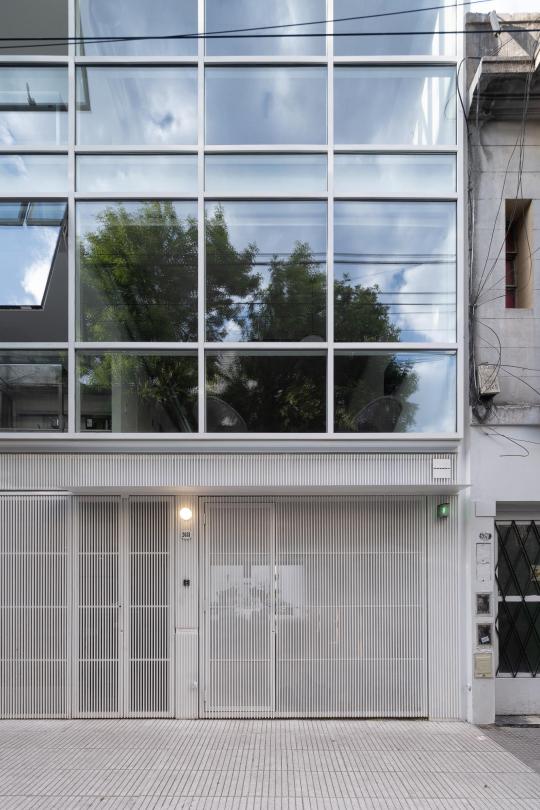


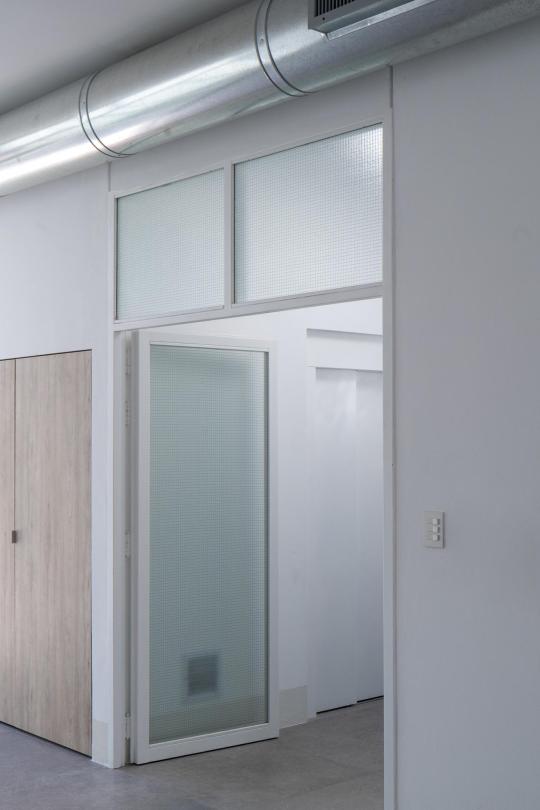

Moreno 2681 by palca estudio
The project is located in Balvanera, a central neighbourhood of Buenos Aires that presents a heterogeneous built profile with a strong commercial presence and an identity characterised by cultural diversity. This pattern is further consolidated when understanding its direct link with the building of the Argentine National Congress, with the large number of hotels distributed throughout the area or with the Miserere Square, that acts as a hub for trains, buses and subways. Balvanera could be interpreted as a neighbourhood of national identity.
Architecture as identity. The assignment originates from the clients' need to have administrative offices in new building that determines their identity as an institution. These offices had to be complemented by apartments to be used by people travelling from the provinces of Argentina to Buenos Aires for a certain period of time. Among the clients' initial demands was the use of a glass façade as an image towards the city, which for us was an essential part of the initial program.
The potential of mixed uses. The initial idea was to locate work and domesticity in the same block. This option was rapidly discarded after the first tests when the incompatibility of the circulation dynamics was verified. Taking advantage of the long proportion of the site (7.60 x 47.60 m) it was then decided to divide the uses into two independent blocks: the office one in the front, more exposed to the street and the domestic one in the back, more reserved in the centre of the block. In this way, a daily relationship is generated between all the people who inhabit the building while providing privacy in each of the parts.
Adapt to the given conditions. Both blocks adjust their buildable profile to the limits determined by the internal front line. This imaginary line is determined by the Government of the City of Buenos Aires to delimit a non-buildable area in the centre of the block. Instead of looking for alternatives to deal with this restriction, the project adapts to the resulting silhouette. In this way, two individual blocks are proposed to take advantage of all the possible footprint and are developed with the necessary height to deal with the proposal.
The void as a meeting place. Both building blocks are connected through a central void that works as a meeting point. This void is projected through a garden of organic shapes, white stones and growing vegetation that aims to generate meeting places for the people who work and inhabit the building.
Versatile and timeless from the beginning. The office block is planned on four levels with open spaces that allow to deal with the constant changes in today's work dynamics. Each level has outdoor spaces materialised by balconies on the lower floors and a terrace on the upper floor. The domestic block is also planned on four levels but made up of two stacked duplex apartments. Each one of them operates as an individual unit designed with the minimum elements necessary to be temporarily inhabited.
How to be efficient in the Argentine context. In an economic context as complex and variable as the Argentine one, it is necessary to be rational and efficient in the materialisation of architecture. In that sense, the construction of the building is proposed in a synthetic and traditional way through the implementation of few elements, but optimising their use. To do this, we proposed a reinforced concrete skeleton and lightweight masonry walls, textured white anodised aluminium frames in the windows and airtight double glazing for greater thermal efficiency. In this way, we make it easier to deal with suppliers while achieving efficiency and durability in the use of the elements.
A new way of perceiving the environment. Faced with a complex and heterogeneous urban context, the project is created from synthesis as contrast. Pure lines, geometric composition and white elements characterise a building that aims to communicate order and timelessness.
Design: palca estudio
Location: Balvanera, Buenos Aires, Argentina
Year: 2023
Photography: Javier Agustín Rojas
18 notes
·
View notes
Text
transforming soffits
reorganizing keys
formalizing immersion joints
justifying kick extractors
advising aggregates
managing elbows
recasting connectors
achieving aluminum trowels
officiating disks
exhibiting absolute spigots
progressing coil hydrants
jerry-building reflectors
informing casters
inventing rubber hoists
performing wrenches
judging chalk adapters
upgrading ignition paths
regrowing flashing
recommending ratchets
approving barriers
sweeping impact fillers
sewing mirrors
detailing collectors
enforcing measures
distributing systems
presenting plugs
interwinding registers
piloting ash diffusers
gathering cranks
supplying eave pockets
undertaking scroll stops
accelerating straps
designing fittings
protecting diamond boilers
logging downspouts
correlating shingles
uniting mallets
qualifying electrostatic lifts
sharing clamps
obtaining circular fluids
ranking foundation gauges
sensing miter brackets
originating space networks
translating drills
regulating guards
selecting gable padding
utilizing pellet dowels
reconciling artifacts
altering pulleys
shedding space filters
determining vents
representing mortar
remaking flash rakers
supporting funnels
typecasting rotary chocks
expressing junctures
resetting auxiliary vises
professing strip treads
inlaying matter trowels
questioning drivers
forming edge fittings
sketching blanks
overshooting spark breakers
rewriting controls
playing tunnels
inventorying buttons
enduring joint handles
effecting ratchet bibbs
unwinding couplings
forsaking vapor conduits
defining sockets
calculating heaters
raising grids
administering tiles
measuring resources
installing ignition remotes
extracting corners
manufacturing ventilators
delegating consoles
treating mounting stones
enacting jig deflectors
intensifying alleys
improvising cargo
pinpointing bobs
prescribing arc masonry
structuring metal chucks
symbolizing lathes
activating plumb kits
adapting coatings
fixing channels
expediting cordage
planning compressors
enlisting hangers
restructuring keyhole augers
shearing ridge hardware
collecting reciprocating bolts
maintaining corrugated dimmers
whetting hole collars
conducting mandrels
comparing assets
compiling sealants
completing paths
composing equivocation wheels
computing dampers
conceiving electrostatic treatment
ordering cotter grates
organizing ties
orienting ladders
exceeding materials
targeting thermocouples
demonstrating emery stock
expanding latch bases
training wardrobe adhesives
overcomming[sic] fasteners
streamlining storm anchors
navigating springs
perfecting turnbuckles
verifying gate pegs
arbitrating arithmetic lifts
negotiating outlets
normalizing strips
building surface foggers
checking key torches
knitting grinders
mowing planers
offsetting stencils
acquiring bulbs
adopting rivets
observing avenues
ascertaining coaxial grommets
slinging wing winches
instituting circuit generators
instructing wicks
integrating pry shutters
interpreting immersion lumber
clarifying coils
classifying wood bits
closing cogs
cataloging matter strips
charting holders
conceptualizing push terminals
stimulating supports
overthrowing shaft spacers
quick-freezing connectors
unbinding ground hooks
analyzing eyes
anticipating gateways
controlling proposition rollers
converting power angles
coordinating staples
correcting benders
counseling joist gaskets
recording gutter pipes
recruiting drains
rehabilitating rafter tubes
reinforcing washers
reporting guard valves
naming freize sprues
nominating rings
noting straps
doubling nailers
drafting circuit hoses
dramatizing flanges
splitting framing compounds
refitting stems
interweaving patch unions
placing sillcocks
sorting slot threads
securing mode cutters
diverting catharsis plates
procuring load thresholds
transferring syllogism twine
directing switch nuts
referring time spools
diagnosing knobs
discovering locks
dispensing hinges
displaying hasps
resending arc binders
retreading grooves
retrofitting aesthetics portals
seeking stocks
shrinking wormholes
assembling blocks
assessing divers
attaining lug boxes
auditing nescience passages
conserving strikes
constructing braces
contracting saw catches
serving installation irons
recognizing fluxes
consolidating fuse calipers
mapping shims
reviewing chop groovers
scheduling lag drives
simplifying hoists
engineering levels
enhancing tack hollows
establishing finishing blocks
13 notes
·
View notes
Text
ok i love the jonas brothers' 'waffle house' song. it's a bop and it speaks to a very specific part of my soul. however. i do really feel the need to clarify, for everyone who's not from the southeastern united states, so that y'all understand the vibes of the song properly
do you see this image?

this is not what the inside of a waffle house looks like.
to be clear, i'm not disparaging whoever designed this set, because they were very successful in their goal of making a classy hometown restaurant.
it's just that unfortunately their goal of "classy hometown restaurant" vibes is inherently at odds with "waffle house" vibes.
the exposed wooden beams on the ceiling? the non-orb-shaped pendant lights? the fancy, mahogany-looking counter? the spaciousness of the main seating area? the booths with full padding? the thin, breakable porcelain mug? the freaking fancy stone masonry on the far right? no. nonono. that's not a waffle house.
let me describe to you a waffle house.
do you remember what mcdonalds and burger king were like in the mid-90s? take that. line everything (everything) with tiles. make it a breakfast place. and then put a big diner counter in the center, and then put the grill, the chefs, and all of the other cooking-related things right behind the diner counter, so that the divide between the food-cooking space and where you sit is purely psychological and is maintained more by social convention than by anything else
and then throw a healthy layer of grease over all of that, and then go there at like two in the morning.
you slide into a booth. it's made almost entirely of hard plastic, with maybe a little pillow-shaped rectangle of padding if you're lucky. the waitress comes over and, standing in the liminal space between "kitchen" and "customer seating", reaches out and hands you a laminated menu over the divider. this menu is exactly the same as it was the first time you came here two decades ago.
the waitress puts in your order, and then you watch as the chef dumps grated potatoes and eggs and bacon out onto the flat surface of the grill. they sizzle. the waitress serves you a fresh mug of coffee in a nigh-indestructible ceramic diner mug. when your food comes, it's incredibly greasy, but it's two in the morning and you've had a very long day and in that moment this bacon egg and cheese sandwich is glorious and so are the hashbrowns
anyway this is the vibe of a waffle house
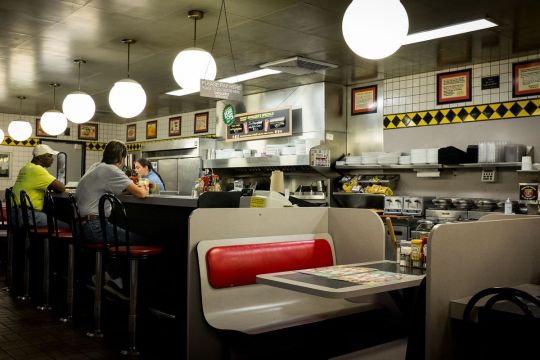
(image taken from here)
idk how to end this post but waffle house is very near and dear and beloved to my soul thank you for coming along on this waffle house journey with me
#i promise i'm not trying to be negative!! i just. love waffle house a lot actually and i need it to be Understood in all its glory#it's like writing a song about redwood trees and then shooting the music video in appalachia#it's still pretty but it sure does change the vibe huh#waffle house
11 notes
·
View notes
Text
Vienna Blood
Has anyone been watching the British detective series "Vienna Blood," airing its third season soon on PBS in the United States?
I watched the first two series and noticed at the time the alchemy in the episodes that dealt with murders and Mozart's opera the Magic Flute. I've now read the corresponding book, Vienna Blood, and found a lot more alchemy there.

Normally I write about works of fantasy, where the Hero's Journey framework has been welded to the structure and symbolism of literary alchemy. So there's a hero, an alchemist/mentor to the hero, an opposite-sex partner to the hero, and a series of trials and torments that purify and transform the hero into the Philosopher's Stone.
But there are other way to draw on alchemy. Frank Tallis' books are detective novels, set in Vienna around 1900. They feature a doctor, Max Liebermann, who is an acolyte of the new psychoanalytic theories of Sigmund Freud, and a Viennese police inspector, Oskar Rheinhardt. Tallis follows the usual conventions of a detective novel--he develops his characters to some degree, but the main point is to spin a clever and engaging mystery.
For the second book in the series, Tallis explores not just the Magic Flute but the secret world of Viennese Masons at the turn of the last century. He begins with the "murder" of a massive snake at the zoo, which is cut into three pieces. This mirrors the opening scene of the Magic Flute, but you can look at the top right of the image on my blog header from Aurora consurgens to see where that idea came from originally.
Then, at the end, Tallis describes a Masonic initiation ceremony that closely resembles the basic tenets of spiritual alchemy. Addressing the man to be initiated, a Mason explains--
In the ancient mysteries, allegorical journeys and tests were arranged for those who were to be admitted. Accordingly, we have retained these forms of the tradition. The journeys that you will undertake are representative of life. Masonry educates its youth by imprinting their lives through symbolic acts....
Whoever travels in darkness to unfamiliar places, as you do, requires a conductor. Fortunate is he who finds in the darkness an honest friend as a skillful guide. Follow me. I will lead you safely....
The life of man moves in a circular fashion.
Tallis consulted with Freemasons in London and Vienna on their rituals, so I'm confident his descriptions are accurate here. So we can see that in Masonic alchemy, in place of an alchemist/mentor there is a "conductor...guide," life's journey is "circular," etc.
The big difference is that there is no female partner for the Mason, no Chemical Wedding to bring his transformation. Freemasonry even today does not admit women to full membership.
Mozart, however, stuck closely to the rules of alchemy in the Magic Flute. Tamino and Pamina go through the trials of fire and water together, they unite in a Chemical Wedding, and they both join the Brotherhood in a mythical Egypt.
7 notes
·
View notes
Text
Masonry Contractors Philadelphia
Enhancing Philadelphia's Architecture: The Role of Masonry Contractors
Philadelphia, a city rich in history and architectural marvels, stands as a testament to the enduring legacy of masonry craftsmanship. From its iconic red brick rowhouses to the majestic stone facades of its historic landmarks, the city's architectural landscape is a tapestry woven with the expertise of skilled masonry contractors. In this article, we delve into the significance of masonry contractors in Philadelphia, exploring their role in preserving the city's heritage while also shaping its future.
The Art of Masonry: Masonry, the age-old craft of building structures using individual units bound together by mortar, has deep roots in Philadelphia's history. Dating back to the city's colonial beginnings, masonry has played a pivotal role in shaping its architectural identity. From the cobblestone streets of Old City to the towering spires of its cathedrals, the mark of skilled masons is etched into every corner of the city.
Masonry contractors in Philadelphia are not merely builders; they are artisans who possess a profound understanding of materials, techniques, and design principles. Whether working with brick, stone, or concrete, these craftsmen exhibit a keen eye for detail and a dedication to excellence that sets them apart.
Preserving Heritage: One of the primary roles of masonry contractors in Philadelphia is the preservation of historic structures. As custodians of the city's architectural legacy, these contractors undertake the delicate task of restoring aging buildings to their former glory. From repointing mortar joints to repairing intricate stone carvings, their work ensures that Philadelphia's rich history remains intact for future generations to appreciate.
The challenges of historic preservation require a unique set of skills and knowledge, which masonry contractors possess in abundance. They must carefully assess the condition of each structure, identify underlying issues, and develop tailored solutions that respect the integrity of the original design. Through meticulous craftsmanship and a commitment to authenticity, these contractors breathe new life into Philadelphia's most cherished landmarks.
Shaping the Future: While historic preservation is a cornerstone of their work, masonry contractors in Philadelphia also play a crucial role in shaping the city's future. As urban development continues to evolve, these craftsmen are at the forefront of constructing modern structures that harmonize with the existing architectural fabric.
From contemporary office buildings to luxury condominiums, masonry remains a preferred choice for its timeless appeal and structural integrity. In an age where sustainability is paramount, masonry contractors are exploring innovative techniques such as green building materials and energy-efficient designs to minimize environmental impact.
Moreover, masonry contractors contribute to the revitalization of neighborhoods by transforming vacant lots and dilapidated structures into vibrant community spaces. By blending traditional craftsmanship with modern innovation, they help create spaces that are both functional and aesthetically pleasing, contributing to the overall quality of life in Philadelphia. In Philadelphia, the legacy of masonry craftsmanship endures as a symbol of resilience and artistry. Through their dedication to preserving the past and shaping the future, masonry contractors play a vital role in enhancing the city's architectural landscape. As Philadelphia continues to evolve, these craftsmen will remain steadfast in their commitment to excellence, ensuring that the spirit of masonry lives on for generations to come.
1 note
·
View note
Text
Steel vs. Other Building Materials_ Why Tata Structura Stands Out
In the 21st century, customs, traditions, and practices have undergone a significant evolution in various spheres of life. From the way we communicate to the medical treatments we receive. Evolution is evident in every walk of life. Even the construction world isn’t lagging behind in the race. Amongst the many changes that have taken place in the construction world, the utilization and application of steel is the most significant one. It has shaken up the realty sector with it’s valuable characteristics like strength-to-weight ratio, durability, malleability, and very high sustainability quotient. Let's explore how the other building materials have fared in this race and why Tata Structura pipe are leading the way in this revolution.
Concrete
Concrete is a mixture of cement, water, sand, and gravel which hardens to create a solid, strong substance. Concrete is the most widely used construction material in the world after water. However, Steel has many advantages over concrete.
Accelerated Pace
Structures that are made of steel hollow sections, are fabricated in a controlled facility and hence reduce the time consumed on the construction site. It also reduces on-site labor requirements thereby increasing the pace of construction.
Less waste and Pollution
The steel tubes used in the construction can be recycled 100% and hence be reused, unlike concrete.
steel has a very low carbon footprint(1.16 tons of CO2 per ton of fabricated hot-rolled steel). This results in an overall reduction of the pollution caused in the construction activity.
Longevity
Structural steel has the strength and integrity required to withstand small-scale seismic events. With applied coatings, steel is protected from the environmental factors and hence this adds to its longevity, even in corrosion-causing conditions.
Quality Control
Off-site fabrication allows for controlled conditions, ensuring a higher quality product configured to precise tolerances. Thanks to quality control measures, the engineers can exactly predict the building’s response against natural disasters like hurricanes, earthquakes,etc. Concrete is a mix of cement, water, sand, and gravel. It is prepared onsite and cannot always be monitored for quality.
Valuation
Steel's resale value is consistent over its lifetime, with the benefit of superior durability in all environments, unlike concrete.
Wood
Wood is commonly used in the construction of walls, ceilings, and floors, while softwoods are often used to make doors, furniture, and window frames.
Accelerated schedule
Prefabricated steel structures made of hollow section steel pipes reduce the significant amount of time that goes into construction. The wooden structures require sawing or trimming even on the site to fit in the intended use. Moreover, wooden structures can be fitted only during dry weather conditions as they expand during rainy seasons.
Reduced waste and pollution
As discussed steel can be recycled and the wastage percentage is also very less or none. However, when the wood is used, almost 56% of the lumber harvest is lost in the production and converted to chips, sawdust, burned or sent to the landfill. Also if wood gets damaged, it needs to be discarded and an entirely new log is required to advance the construction.
Longevity
Steel offers unparalleled longevity and hence hollow section steel pipes and tubes are rampantly used in the construction world. Whereas, wooden structures can fall prey to insect or vermin infestation, moisture-related mold, rot or decay, or gradual creep under load. Unlike steel, wood is combustible and hence a fire hazard.
Masonry
Masonry consists of building structures made from single units that are bound together with mortar. Brick, stone and, concrete blocks are the most common materials used in masonry construction.
Future modification and adaptability
The structures made of tata steel tubes are designed in such a way that they can be modified or even altered even during construction. This flexibility is not available in masonry.
Wastage
In masonry if the blocks get cracks then it is more likely to be wasted as it has no alternate use.
Lack of ease to operate
The stone blocks used in masonry are difficult to carry around and require more labor power. They also need to be handled carefully to avoid accidents.
High Maintenace
The stone blocks used in masonry are literally sculpted stones and hence susceptible to the growth of moss, small plants, and other flora and fauna if not maintained properly. They require regular upkeep, unlike steel.
In conclusion, while each building material has its own unique characteristics and advantages, steel emerges as a superior choice in terms of strength, durability, recyclability, and ease of construction. Tata Structura's steel pipes, in particular, exemplify these qualities, making them an ideal solution for modern construction projects that demand efficiency, sustainability, and long-lasting performance.
For more details, visit our website: https://www.tatastructura.com
0 notes
Text
The cost of Brick And Rock Masonry
Did you know that every system choice you choose impacts the your home's resale value? A person may not get thinking about selling now, nevertheless the decisions you make today in masonry will think about heavily when a person are ready to offer. A wise house owner makes careful options.
The first point you need to be able to do is research. Choose an educated realtor and ask them what's sizzling in your town. Great cost-effective choices are both brick and stone masonry for your external of your residence. For any long strain of time throughout United states history, people have loved the durability they provide.
As well as, they denote very clear signs of high quality to any potential buyers. Siding and construction are also good choices, but they may have the interest value these two dynamos have. As soon as the potential buyer drives into your drive, they shall be checking out and about the curb appeal.
Certainly not only will an individual be capable to complete along the worth of the house to the next home owner, nonetheless they can pass it along as well. Sound building components such as just still cannot be beaten.
In the event that you're planning to buy a home produced of brick or stone masonry, always take great attention with the residence inspection. Check to see if virtually any cracks have developed within the mortar. These may get the consequence of the particular house settling or some other wall stress.
Also, check the particular weep holes technique. These holes drain excess moisture straight behind the wall surfaces. Make sure they may not filled together with debris. Check the ground level locations where these holes may perhaps be allowing moisture throughout during heavy rains. All in most, these two elements are mostly preservation free and long lasting, while including value to the home.
Whenever you pay a visit to the brick in addition to stone masonry firm, you'll be agreeably surprised at how numerous choices of coloring and style generally there are. Many shops have faux wall surfaces, which help give you a better idea associated with the way the exterior will certainly look when completed.
But one of the most effective ways to be able to decide is to drive around the few neighborhoods and check out the styles and colors for oneself. You'll soon become able to quickly determine which option you wish to enhance the exterior of your home.
Price is always a consideration as well. Today, there are lots of companies that install these elements so do your homework, inquire around and you will soon find one who may have the competitive prices you need.
Plus, there aren't many problems associated with brick and rock. The protection they add to a house creates a fortress-like atmosphere. Remember typically the story with the 3 Little Pigs? If the wolf huffed and puffed can not blow throughout the house made associated with brick.

Brick and even stone masonry exteriors have both proven successful surfaces over time. Just look at the most well-known homes in America, and you will view the ones made from those two goods have stood typically the test of period. After all, that is a large investment if you're protecting - your house and your household.
1 note
·
View note
Text

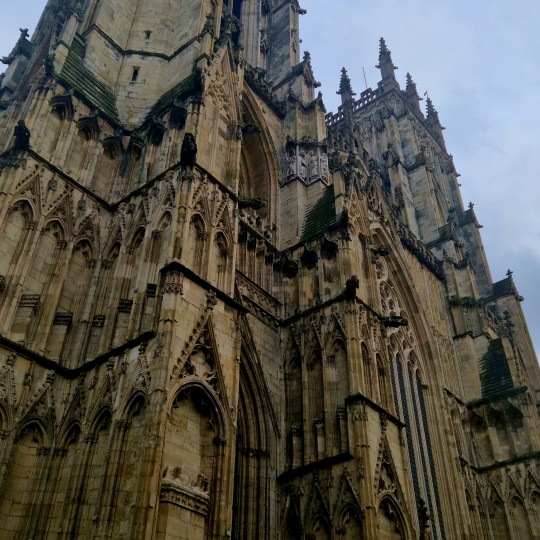
York Minister, United Kingdom
0 notes
Text
Stay Warm This Winter: Top Home Heating Options Explained
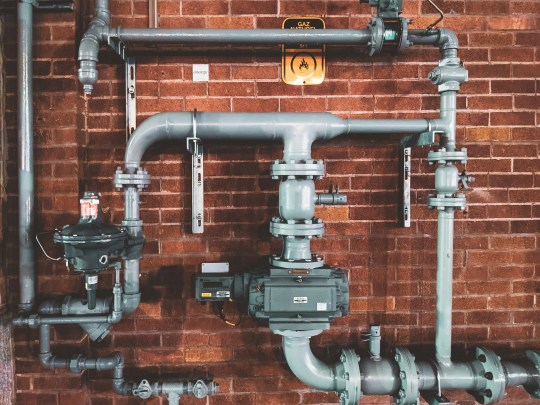
As the winter chill settles in, ensuring your home stays warm and cozy becomes a top priority. With a plethora of heating options available, choosing the right one can be overwhelming. From traditional furnaces to modern heat pumps, each method has its own set of advantages and considerations. Let's explore some of the top home heating options to help you make an informed decision and keep your home snug throughout the cold season.
Furnaces: Furnaces have long been a popular choice for home heating. They work by burning fuel (such as natural gas, propane, or oil) to generate heat, which is then distributed throughout the house via ductwork. Furnaces offer reliable and consistent heating, making them suitable for cold climates. However, they require regular maintenance to ensure efficiency and safety.
Boilers: Boilers are another common heating option, especially in areas with harsh winters. Unlike furnaces, which use air to distribute heat, boilers heat water or steam, which is then circulated through radiators or underfloor heating systems. Boilers are known for their energy efficiency and even heat distribution. However, they can be expensive to install and may require more space for equipment and piping.
Heat Pumps: Heat pumps have gained popularity in recent years due to their energy efficiency and versatility. They work by transferring heat from the outside air (or ground) into your home during the winter months and vice versa during summer for cooling. Heat pumps are highly efficient, especially in moderate climates, and can significantly reduce heating costs over time. However, they may not be as effective in extremely cold climates.
Electric Heaters: Electric heaters are a convenient and portable option for supplemental heating in specific areas of your home. They come in various forms, including space heaters, baseboard heaters, and radiant heaters. Electric heaters are easy to install and use, making them ideal for smaller spaces or rooms that need additional warmth. However, they can be costly to operate compared to other heating methods. Click here salus thermostat
Fireplaces and Wood Stoves: For those craving a rustic ambiance, fireplaces and wood stoves offer both warmth and aesthetic appeal. They burn wood or pellets to produce heat, providing a cozy atmosphere during cold winter nights. Fireplaces can be traditional masonry or modern gas-burning units, while wood stoves are freestanding and more efficient at heating specific areas. However, they require regular maintenance and proper ventilation to ensure safety.
Radiant Floor Heating: Radiant floor heating is a luxurious option that provides comfortable warmth by circulating hot water through pipes or electric coils installed beneath the floor. This method distributes heat evenly throughout the room, eliminating cold spots and reducing energy consumption. While radiant floor heating can be costly to install, it offers long-term savings and unparalleled comfort, especially in tiled or stone flooring.
Geothermal Heating: Geothermal heating utilizes the earth's natural heat to warm your home, making it one of the most environmentally friendly options available. A geothermal heat pump extracts heat from the ground through underground pipes and transfers it into your home via a heat exchanger. Geothermal systems are highly efficient and can significantly reduce heating costs over time. However, they require substantial upfront investment and may not be feasible for all properties.
Solar Heating: Solar heating harnesses the power of the sun to provide warmth and hot water for your home. Solar panels installed on the roof or in the yard capture sunlight and convert it into thermal energy, which is then used to heat water or air for heating purposes. While solar heating systems can be expensive to install, they offer long-term savings and reduce dependence on fossil fuels.
Choosing the right heating option for your home depends on various factors, including climate, budget, energy efficiency, and personal preferences. Consulting with a heating professional can help you evaluate your options and determine the most suitable solution for your needs. Whether you opt for a traditional furnace, a modern heat pump, or a renewable energy system, prioritizing efficiency and comfort will ensure you stay warm and cozy throughout the winter months.
0 notes
Text
Masonry Near Me: The Craftsmanship Your Home Deserves
In the world of home improvement and construction, nothing stands the test of time like quality masonry. From beautifully constructed stone walls to detailed and structurally sound chimneys, a skilled masonry contractor can significantly enhance your home's charm and functionality. This article will explore what a professional masonry contractor does, and their key services, such as chimney sweeping and maintenance, that add value to your property.
The Expertise of a Masonry Contractor
A masonry contractor's job transcends beyond just creating structures; it is an art form that has been perfected through centuries. These professionals work with bricks, concrete blocks, and natural stones to build durable structures – from garden pathways to grand fireplaces. Their understanding of building codes, structural principles, project planning, and material characteristics ensures every project is safe and executed optimally.
Chimney Services – Safety & Aesthetics Hand-in-Hand
One common service requested when searching for masonry near me involves chimneys. An elegantly crafted chimney not only adds aesthetics but also assures safety when venting smoke out of your home during those cozy fireplace moments. Within this umbrella, services are crucial specifics like chimney repairs for issues like leaks or structural instability caused by harsh weather conditions over time.
Moreover, water damage prevention is another critical aspect covered by professional chimney services. Masonry contractors ensure proper sealing against rainwater infiltration that could cause premature deterioration in mortar joints and overall structure.
Essentiality Of Regular Chimney Sweep
Maintaining your chimney is a must for clean-burning fires and more critically ensuring safety at home. Soot build-up (creosote) in the flue can lead to dangerous house fires if left unchecked over time. A professional chimney sweep will remove the soot accumulation within your chimney lining restoring safer operation while improving the draw of smoke out of your home.
Additionally, sweeping services often include wildlife and debris removal—birds or small mammals sometimes start calling your chimney home. Heaps of leaves can also build up over the seasons posing obstruction to the smoke venting pathway. An expert sweep addresses these incidences safely and efficiently.
The Value Addition Of Masonry To Your Home
There is no denying that a well-executed masonry project significantly uplifts your property's value. Exterior projects like patios, retaining walls, or outdoor fire pits offer functional spaces to entertain guests and relax during fair weather months. Inside the home, stone-accented living areas or a revamped fireplace bring an element of sophistication and elegance.
In addition to visual appeal, quality masonry work adds financial value as well; it raises property worth with aspects such as increased energy efficiency (stone does an excellent job holding heat in winters and keeping interiors cool during summers) and low maintenance costs due to stone’s durability.
When you find yourself searching for masonry near me, remember that the results will offer much more than just another contractor–you will discover skilled artisans who can elevate your space's functionality while adding timeless beauty. Whether it’s for routine chimney maintenance, or a new construction project entirely made from stone or brick - their knowledge is invaluable in providing safety measures necessary to keep homes intact for years and generations to come. One thing is certain in choosing a professional masonry contractor: you invest in craftsmanship that endures time embedding rich character into your home.
Bone Dry Masonry - Indianapolis
Address: 7735 Winton Dr, Indianapolis, IN 46268, United States
Phone: (317) 489-6400
Visit our profiles:
Bone Dry Masonry - Indianapolis - Facebook
Bone Dry Masonry - Indianapolis - Twitter
Bone Dry Masonry - Indianapolis - Instagram
Bone Dry Masonry - Indianapolis - LinkedIn
1 note
·
View note
Text
Preserving the Beauty of Your Property with Expert Masonry Restoration Services in Richmond
Is your property in Richmond showing signs of wear and tear on its masonry elements? Trust Nickel Masonry & Construction for professional masonry restoration services that breathe new life into your structures. With our expertise and commitment to quality, we restore the beauty, durability, and functionality of your masonry features, ensuring they stand the test of time.
Masonry elements such as Brick Repairs Chimney, stone facades, and concrete structures add character and charm to residential and commercial properties. However, over time, exposure to weather, environmental factors, and regular wear can lead to deterioration, cracks, discoloration, and other issues. It's essential to address these issues promptly to prevent further damage and preserve the integrity of your property.
At Nickel Masonry & Construction, we specialize in masonry restoration services tailored to the unique needs of each project. Our team of skilled craftsmen has extensive experience in working with various masonry materials, including brick, stone, concrete, and more. We employ proven techniques and high-quality materials to achieve exceptional results that exceed our clients' expectations.
One of the key benefits of choosing our masonry restoration services is our comprehensive approach. We begin with a thorough assessment of the existing masonry elements to identify areas of concern, such as cracks, spalling, efflorescence, or structural issues. Based on our assessment, we develop a customized restoration plan that addresses these issues effectively while preserving the original character and aesthetics of the structure.
Our masonry restoration services in Richmond include:
Brick and Stone Repointing: Repointing involves replacing deteriorated mortar joints to enhance structural integrity and prevent water penetration.
Crack Repair: We use specialized techniques to repair cracks in masonry elements, ensuring they are structurally sound and visually appealing.
Cleaning and Sealing: We offer professional cleaning and sealing services to remove dirt, stains, and pollutants from masonry surfaces and protect them from future damage.
Color Matching: Our experts can match the color and texture of new mortar or masonry units with existing ones to achieve a seamless and cohesive look.
Structural Reinforcement: We provide structural reinforcement solutions to strengthen masonry elements and prevent further deterioration.
By choosing Nickel Masonry & Construction for your masonry restoration needs in Richmond, you can expect:
Expert assessment and diagnosis of masonry issues
Customized restoration solutions tailored to your property's requirements
High-quality materials and craftsmanship for long-lasting results
Professional and reliable service from start to finish
Enhanced durability, functionality, and aesthetics of your masonry features
Don't let damaged or deteriorated masonry elements detract from the beauty and value of your property. Contact Nickel Masonry & Construction today for expert masonry restoration services in Richmond. Trust us to revitalize your masonry features and ensure they remain a source of pride for years to come.
Masonry restoration services Richmond are essential for preserving the beauty and integrity of your property. Visit our website to learn more about our masonry restoration services and schedule a consultation with our team.
0 notes
Text
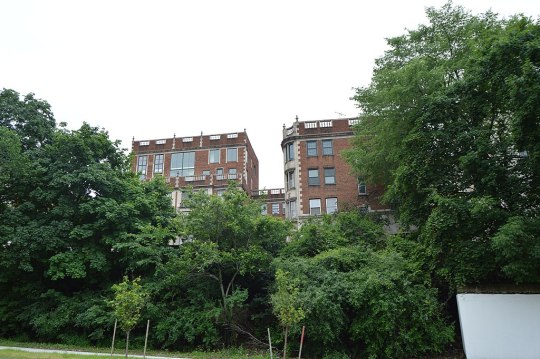
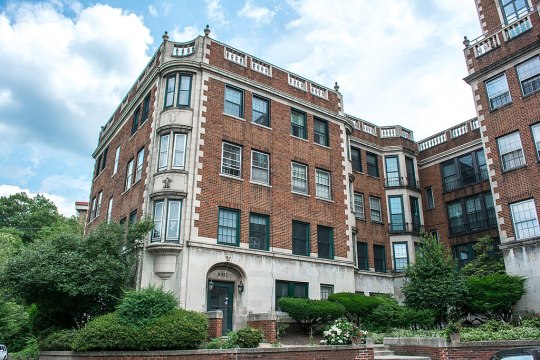

Cedar Glen Apartments
11424-11432 Cedar Glen Parkway
Cleveland, OH
The Cedar Glen Apartments, 11424-11432 Cedar Glen Parkway in Cleveland, Ohio, is a historic Georgian Revival luxury apartment building located on a bluff overlooking Cedar Glen Parkway in the University Circle neighborhood of Cleveland, Ohio. Designed by prominent local architect Samuel H. Weis and completed in 1927, the building originally contained luxury apartments and served as a gateway to the more exclusive neighborhood of Cleveland Heights, on whose border the building is located.
The city of Cleveland lies on the shore of Lake Erie on the Erie Plain. Just a few miles inland is the Portage Escarpment, which separates the Erie Plain from the Appalachian Plateau. The Portage Escarpment also defines the political geography of Cleveland and its eastern suburbs, and acts as both the legal and natural boundary between Cleveland and the city of Cleveland Heights, Ohio. In part, two ravines provided natural access to the heights atop the escarpment. One was the Doan Brook ravine, which today is encompassed by Ambler Park. The other was commonly referred to as Cedar Glen. From the beginning of white settlement of the area until about 1890, the area atop the escarpment (which would later become East Cleveland Township in 1847 and Cleveland Heights in 1901) was only very sparsely settled. Scattered on the edge of the escarpment were dairies, farms, orchards, and vineyards in Cedar Glen.
Despite the extensive development on the east (Cleveland Heights) side of Ambleside Drive, by 1910 no development had occurred in the area west of it (within the city of Cleveland). In 1925, planning began on the Cedar Glen Apartments at 11424-11432 Cedar Glen Parkway. Owned and designed by prominent local architect Samuel E. Weis (a.k.a. Samuel E. White), it was one of the first apartment buildings to be erected in Cleveland in several years. Located just inside the Cleveland city limits at the corner of Ambleside Drive and Cedar Glen Parkway and facing the parkway, the structure was 15 feet to 25 feet above the road. With a then-unobstructed view of the Cleveland Museum of Art, Western Reserve University, Case Institute of Technology, Severance Hall, and University Circle, it was only a short distance south of Cleveland's Little Italy.
The building had a 335-foot frontage on Cedar Glen Parkway, and a 200-foot frontage on Ambleside Drive. The building's access road was set back 30 feet from Cedar Glen Parkway, and the structure's east wall 20 feet from Ambleside. Ample vacant land at the rear of the building provided privacy. The first floor of the Georgian Revival-style building's exterior was clad in Indiana limestone, with the upper floors consisting of exposed brick with limestone trim at the corners and around the doorways. The windows were trimmed with stone. The building frame was steel, with walls, floors, and the roof of reinforced concrete. The cornice was topped by a balustrade consisting of terra cotta balusters and a stone railing. Stone urns rested atop the balustrade. The structure's exterior and interior masonry walls were certified by the Cleveland Clay League as using locally sourced materials, fireproof, and attractive. The E-shaped building had a garden forecourt 75 feet deep and 100 feet long. The apartment complex itself consisted of a six-story central tower equipped with an elevator, and two four-story walk-up wings (e.g., equipped with stairs but no elevator). Each wing, each connection, and the central tower all had their own entrances. The building had an underground 40-car garage with internal staircases (so patrons did not have to exit the garage to reach the interior of the building).
As originally constructed, the Cedar Glen Apartments had 27 units ranging in size from four to eight rooms, some with servants' quarters. Intended as a luxury apartment, all the rooms were unusually large. Each bedroom had its own bathroom, and featured large windows. Each apartment had a fireplace of molded concrete, numerous closets, and enclosed radiators, and came equipped with the latest electronic work-saving appliances (such as a frost free refrigerator, dishwasher, and stove exhaust hood). The central tower was topped with a 4,000-square-foot, two-story, 12-room, six-bath penthouse. Each room in the penthouse had 20-foot ceilings. The upper floor of the penthouse consisted of two bedrooms and a bathroom. The final cost of the Cedar Glen Apartments was $650,000, slightly higher than its projected cost of $600,000, and the building was completed in July 1927.
In 1951, the Cedar Glen Apartments were acquired by two investors, T.W. Grogan (head of the T.W. Grogan Co., a local construction firm) and R.R. Hollington (of the Marshman, Hollington and Steadman law firm). No purchase price was reported. A major fire struck the building on February 27, 1956. The blaze erupted in the kitchen on the first floor of the empty penthouse at 10 P.M., and spread to the second floor. Although the fire was contained by 1 A.M., it continued to burn until daylight as firefighters had difficulty accessing the walls and ceilings due to the building's exceptionally strong design. Heavy water and smoke caused $150,000 in damages to central tower. The Cedar Glen Apartments were sold again in October, 1960. Otto and Vilma Psenicka (west side home builders) purchased the structure from Grogan and Hollington for $400,000. The Psenickas significantly renovated the building the following year.
In 1991, the Judson Park retirement community (located across Ambleside Drive) purchased the Cedar Glen Apartments with the intent of razing the structure so that it could build a parking garage on the site. Residents of the Cedar Glen Apartments organized to oppose the demolition, proposing to buy the building themselves and renovate it. Financing for that plan did not materialize. In summer 1993, Judson Park agreed to sell the Cedar Glen Apartments to the local law firm of Climaco Seminatore Lefkowitz and Garofoli for $1.2 million. The new owners planned to convert the building to condominiums. To help the new owners secure historic tax credits to pay for the repairs, the city of Cleveland designated Cedar Glen Apartments a Cleveland Landmark, and the building owners sought and won designation of the structure as a National Historic site. It was listed with the National Register of Historic Places on June 17, 1994. In July, 1995, the Cleveland Restoration Society honored Cedar Glen residents Michael and Debbie May for their campaign to save the historic structure, and in negotiating its sale to the Climaco law firm.
0 notes